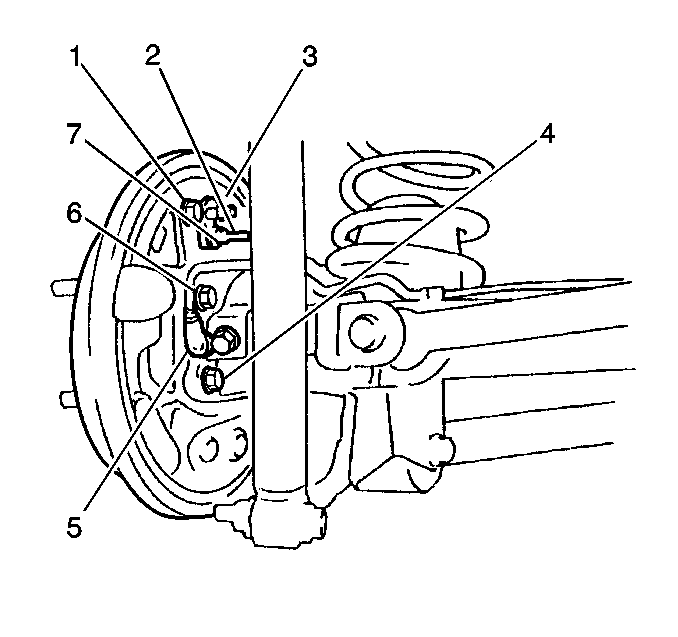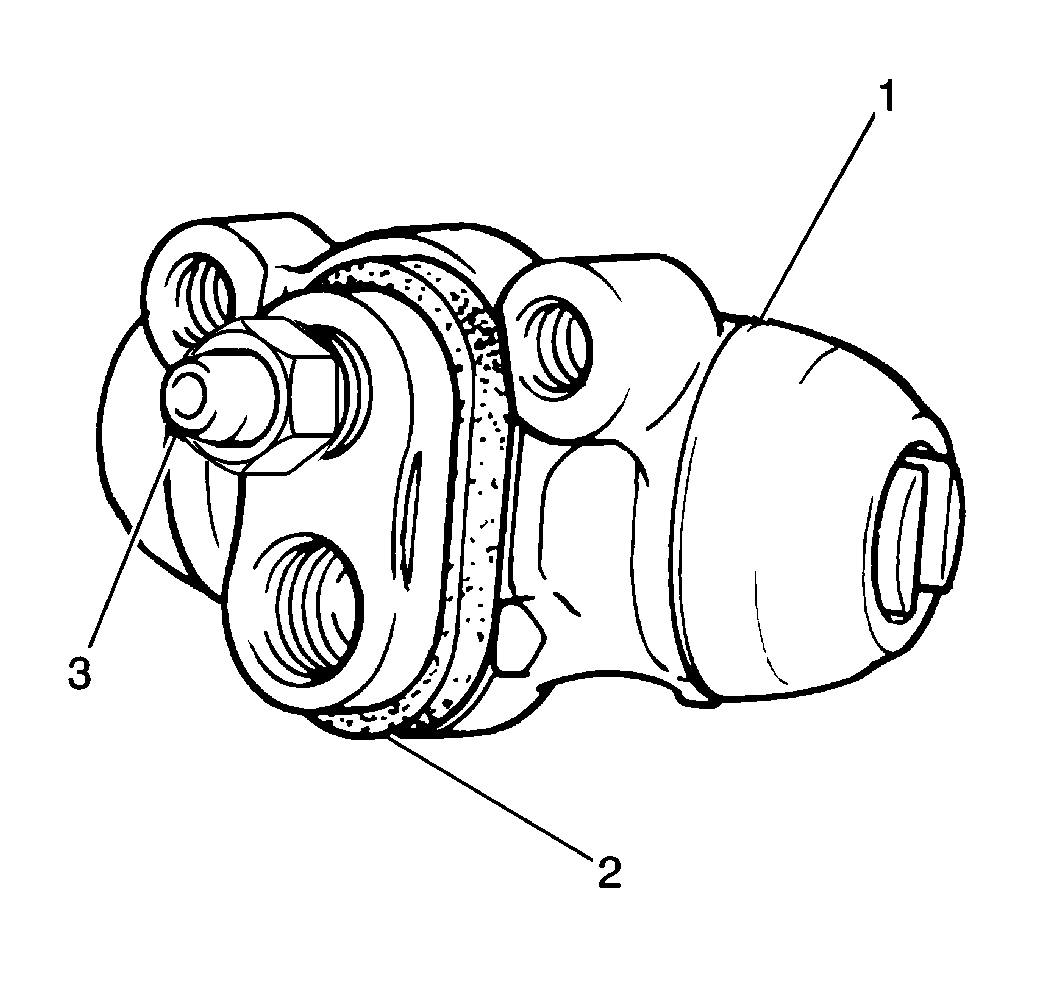Removal Procedure
- Raise and support the vehicle. Refer to Lifting and Jacking the Vehicle in General Information.
- Remove the rear tire and wheel assembly. Refer to Tire and Wheel Removal and Installation in Tires and Wheels.
- Remove the brake drum. Refer to Brake Drum Replacement .
- Remove the brake shoes. Refer to Brake Shoe Replacement .
- Clean the wheel cylinder and the outboard side of the brake backing plate. Use GM Non-Chlorinated Brake Parts Cleaner, GM P/N 12377981 (Canadian P/N 1093463), or equivalent.
- Clean the brake pipe (2) and the inboard side of the brake backing plate. Use GM Non-Chlorinated Brake Parts Cleaner, GM P/N 12377981 (Canadian P/N 1093463), or equivalent.
- If you are servicing the right wheel cylinder, loosen the 2 brake pipe flare nuts. Ensure the brake fluid does not leak from the brake pipes.
- If you are servicing the left wheel cylinder, loosen the brake pipe flare nut (7). Ensure the brake fluid does not leak from the brake pipe.
- Remove the 2 wheel cylinder bolts (1).
- Remove the bleeder valve cap (3) from the left rear brake bleeder valve.
- If you are servicing the right wheel cylinder, remove the bleeder valve cap from a front brake bleeder valve.
- If you are servicing the right wheel cylinder, remove the 2 brake pipes from the right wheel cylinder. Plug the brake pipes with the bleeder valve caps in order to prevent contamination of the brake fluid.
- If you are servicing the left wheel cylinder, remove the brake pipe from the left wheel cylinder. Plug the brake pipe with the bleeder valve cap.
- Remove the wheel cylinder from the backing plate.
- Remove the gasket from the wheel cylinder.

Installation Procedure
- Install the gasket (2) to the wheel cylinder (1).
- Install the wheel cylinder to the backing plate.
- Install the 2 wheel cylinder nuts (1).
- If you are installing the right wheel cylinder, remove the 2 caps from the 2 brake pipes. Install the 2 brake pipes to the wheel cylinder.
- If you are installing the left wheel cylinder, remove the cap from the brake pipe. Install the brake pipe (2) to the wheel cylinder.
- If you are servicing the right wheel cylinder, install the cap to the front brake bleeder valve.
- Install the cap (3) to the left rear brake bleeder valve.
- Install the brake shoes. Refer to Brake Shoe Replacement .
- Install the brake drum. Refer to Brake Drum Replacement .
- Install the rear tire and wheel assembly. Refer to Tire and Wheel Removal and Installation in Tires and Wheels.
- Lower the vehicle.
- Bleed the brake system. Refer to Hydraulic Brake System Bleeding .

Important: If the gasket is worn or damaged, install a new gasket.

Notice: Use the correct fastener in the correct location. Replacement fasteners must be the correct part number for that application. Fasteners requiring replacement or fasteners requiring the use of thread locking compound or sealant are identified in the service procedure. Do not use paints, lubricants, or corrosion inhibitors on fasteners or fastener joint surfaces unless specified. These coatings affect fastener torque and joint clamping force and may damage the fastener. Use the correct tightening sequence and specifications when installing fasteners in order to avoid damage to parts and systems.
Tighten
Tighten the nuts to 8.5 N·m (78 lb in).
Tighten
Tighten the 2 flare nuts to 16 N·m (12 lb ft).
Tighten
Tighten the flare nut to 16 N·m (12 lb ft).
